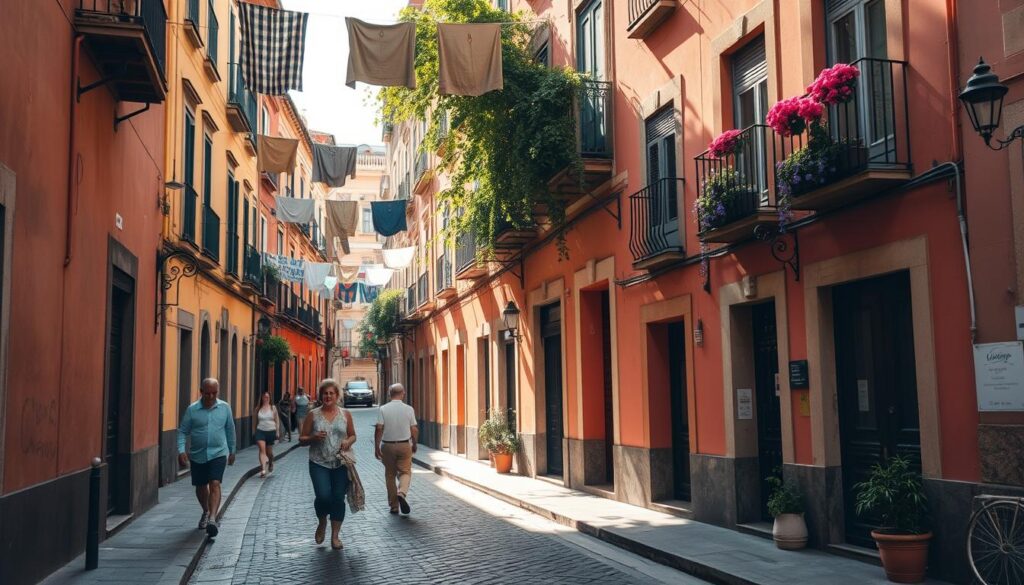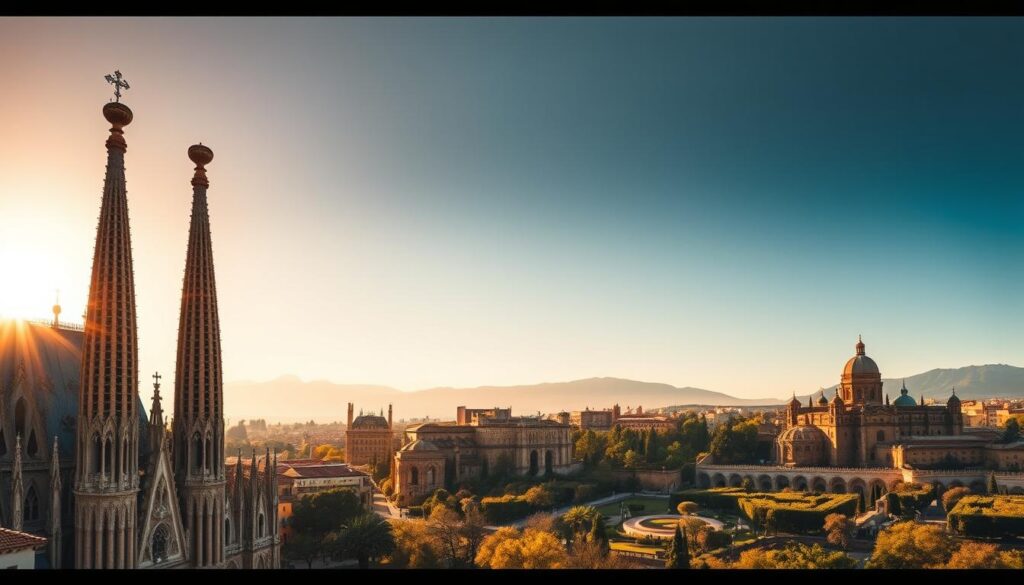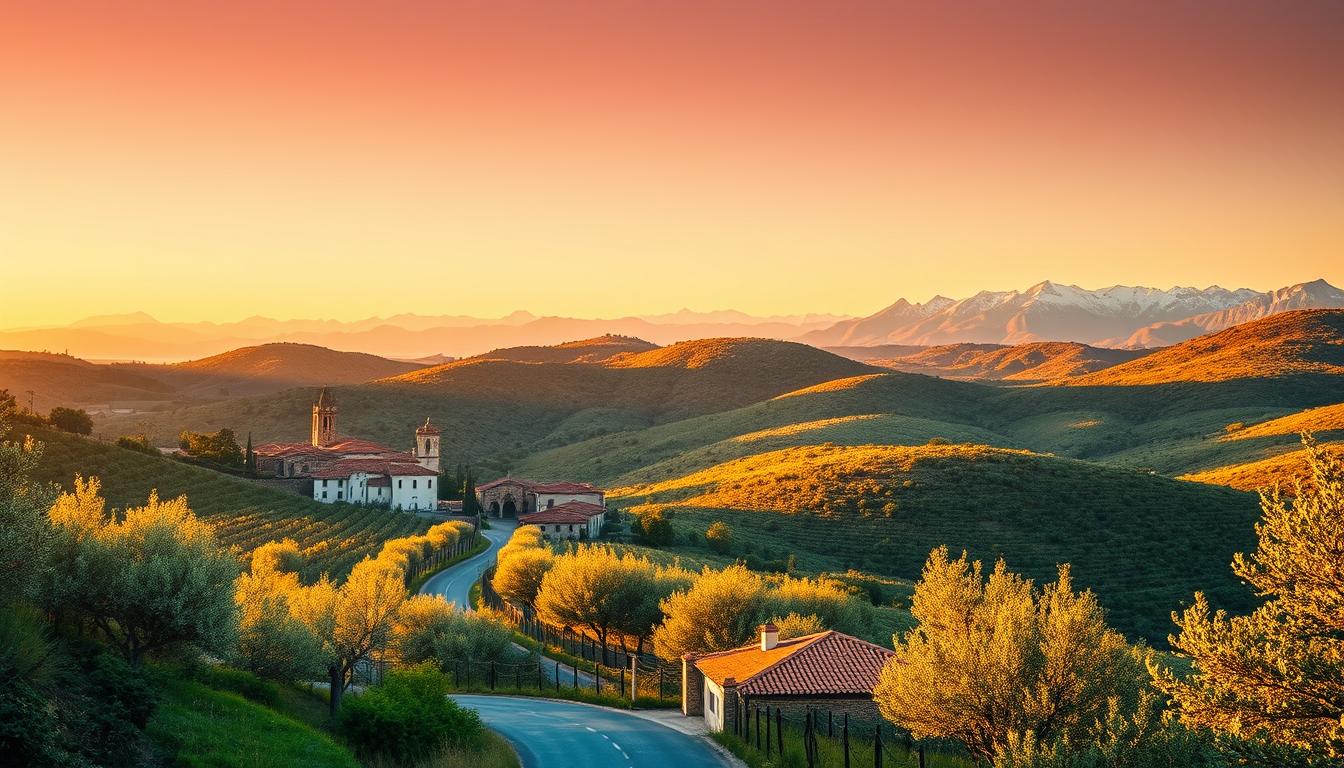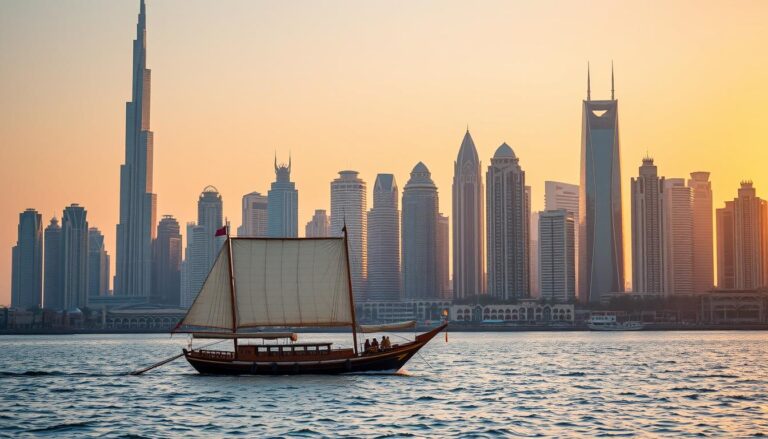Spain Travel Aesthetic: Immerse Yourself in the Beauty
Imagine standing on a sun-drenched terrace overlooking the vibrant streets of Seville, where every corner whispers stories of passion and history. The spain travel aesthetic isn’t just a visual experience—it’s a sensory journey that awakens your soul. From the golden light cascading over ancient stone walls to the rhythmic movements of flamenco dancers, Spain offers a mesmerizing tapestry of beauty that transcends ordinary travel.
Spain’s landscape is a canvas painted with extraordinary colors and textures. The spain travel aesthetic captures more than picturesque scenes—it embodies a profound cultural richness that transforms every moment into a living artwork. Whether you’re wandering through medieval streets or relaxing on Mediterranean coastlines, you’ll discover a destination that speaks directly to your imagination.
This visual odyssey invites travelers to explore a world where tradition and modernity dance together, creating an unforgettable aesthetic experience that lingers long after the journey ends.
Table of Contents
Understanding the Essence of Spain Travel Aesthetic
Spain’s visual culture is a captivating tapestry that weaves together centuries of artistic expression, creating a unique spain travel aesthetic that enchants travelers from around the world. The country’s design philosophy is a remarkable journey through time, blending rich historical traditions with contemporary creativity.
Cultural immersion begins with understanding the intricate layers of Spanish visual storytelling. This aesthetic is not just about appearances but about experiencing the soul of a nation through its artistic expressions.
Defining Spanish Visual Culture
Spanish visual culture emerges from a complex historical backdrop, characterized by diverse influences:
- Moorish architectural elegance
- Mediterranean color palettes
- Vibrant artistic traditions
- Passionate emotional expressions
“In Spain, art is not just created; it is lived and breathed.” – Anonymous Spanish Artist
The Blend of Modern and Traditional
The spain travel aesthetic brilliantly balances historical depth with contemporary innovation. Modern Spanish designers draw inspiration from traditional craftsmanship while pushing creative boundaries.
- Architectural designs that respect historical contexts
- Fashion that merges classic and cutting-edge styles
- Urban spaces that celebrate cultural heritage
Elements of Spanish Design Philosophy
At its core, Spanish design philosophy embraces authenticity, passion, and storytelling. Cultural immersion means understanding how each visual element connects to deeper cultural narratives.
From the intricate tile work of Andalusian palaces to the minimalist architecture of Barcelona, Spanish aesthetics invite travelers to explore a world where every detail tells a story.
Majestic Spanish Architecture Through the Ages
Spain boasts an incredible architectural landscape that tells a rich story of cultural transformation. The spanish architecture reflects centuries of diverse influences, creating a stunning visual tapestry that captivates visitors and historians alike.
The historical sites across Spain showcase an extraordinary blend of architectural styles, each representing a unique chapter in the nation’s complex history. From ancient Roman structures to intricate Moorish designs, these buildings stand as living monuments to Spain’s remarkable past.
- Roman Aqueducts: Remarkable engineering marvels that demonstrate sophisticated construction techniques
- Moorish Palaces: Intricate geometric patterns and stunning architectural details
- Gothic Cathedrals: Vertical lines and elaborate stone craftsmanship
Visitors can explore breathtaking spanish architecture in cities like Granada, Toledo, and Córdoba. Each location offers a unique glimpse into different architectural periods, with UNESCO World Heritage Sites providing exceptional preservation of these magnificent structures.
The evolution of Spanish architectural design represents more than just buildings – it symbolizes the cultural resilience and artistic innovation of the Spanish people. From medieval fortresses to baroque churches, these historical sites tell profound stories of conquest, creativity, and cultural exchange.
“Architecture is a visual diary of civilization’s journey” – Anonymous Historian
Mediterranean Landscapes That Capture Hearts
Spain’s breathtaking mediterranean landscape offers a visual feast that captivates travelers and photographers alike. From rugged coastlines to serene rural settings, the country’s natural beauty tells a story of dramatic contrasts and stunning vistas.
The mediterranean landscape of Spain presents an extraordinary tapestry of natural wonders that beckon explorers and dream seekers. Each region reveals unique characteristics that make the country’s scenery truly remarkable.
Coastal Vistas and Hidden Coves
Coastal towns along the Spanish shoreline offer some of the most picturesque views in Europe. These hidden gems showcase:
- Crystal-clear turquoise waters
- Dramatic rocky cliffs
- Secluded beaches accessible only by boat
- Charming fishing villages with whitewashed buildings
Mountain Ranges and Rural Scenery
Spain’s interior reveals a different kind of beauty through its impressive mountain ranges and expansive countryside. The diverse terrain includes:
- Pyrenean peaks with snow-capped summits
- Sierra Nevada’s dramatic landscapes
- Rolling hills with ancient stone structures
Vineyard Aesthetics in Spanish Countryside
The rural landscapes of Spain are particularly enchanting in wine-producing regions. Vineyards create a mesmerizing checkerboard of green and golden hues, representing centuries of agricultural tradition.
| Region | Landscape Characteristic | Notable Feature |
|---|---|---|
| La Rioja | Rolling vineyard hills | World-renowned wine production |
| Priorat | Steep terraced vineyards | Slate soil landscapes |
| Ribera del Duero | Expansive wine country | Historic winemaking traditions |
Each landscape tells a story of natural beauty, cultural heritage, and the timeless connection between land and people.
Cultural Immersion in Spanish Cities
Spanish cities offer an extraordinary gateway to cultural immersion unlike any other destination. Each urban landscape tells a vibrant story of tradition, art, and contemporary life that captures the essence of the spain travel aesthetic. From the bustling streets of Barcelona to the historic charm of Seville, these metropolitan spaces become living museums of Spanish culture.
The urban experience in Spain goes beyond simple sightseeing. Travelers can dive deep into authentic local experiences through:
- Wandering through hidden neighborhood plazas
- Participating in local festivals and street celebrations
- Engaging with neighborhood artisans and street performers
- Exploring traditional markets and local cuisine
“In Spanish cities, every street corner whispers a story, every café harbors a memory.” – Spanish Travel Historian
Cultural immersion in Spain means embracing spontaneity and local rhythms. The cities pulse with energy, inviting travelers to become part of their dynamic fabric. Whether you’re sipping espresso in a Madrid café or watching street musicians in Valencia, you’ll feel the authentic heartbeat of Spanish urban life.
Each city presents a unique window into Spanish identity. Barcelona showcases modernist architecture, Granada reflects Moorish influences, and Bilbao demonstrates contemporary artistic innovation. These urban landscapes are not just destinations but living canvases of cultural expression.
Historical Sites and Their Timeless Appeal
Spain’s landscape is a breathtaking canvas of historical sites that tell stories spanning thousands of years. The country’s spanish architecture reflects a rich tapestry of cultural influences, creating an incredible journey through time for travelers and history enthusiasts.
Each stone and archway in Spain’s historical sites whispers tales of civilizations that shaped the Iberian Peninsula. From ancient ruins to magnificent structures, these landmarks offer visitors a profound connection to the past.
Ancient Roman Influences
Roman architectural legacy remains deeply embedded in Spanish landscapes. Key historical sites showcase remarkable engineering and design:
- Aqueduct of Segovia: A stunning example of Roman engineering
- Roman Theater in Mérida: Preserved architectural marvel
- Ruins of Italica: Ancient Roman city near Seville
Moorish Architectural Heritage
The Moorish period left an indelible mark on spanish architecture, introducing intricate designs and innovative building techniques. The Alhambra in Granada stands as a pinnacle of this architectural brilliance, featuring stunning geometric patterns and elegant courtyards.
Gothic and Renaissance Treasures
Spain’s historical sites from Gothic and Renaissance periods demonstrate extraordinary artistic and architectural evolution. Structures like the Toledo Cathedral and the Royal Palace of Madrid represent pinnacles of architectural achievement, blending intricate details with spiritual and royal grandeur.
These historical sites not only preserve Spain’s rich cultural heritage but also invite modern travelers to step back in time and experience the extraordinary stories etched in stone.
The Visual Poetry of Spanish Streets

Spanish streets breathe life into the country’s remarkable spain travel aesthetic. Each cobblestone pathway tells a story, weaving together architectural beauty and cultural depth. From narrow medieval alleys to expansive boulevards, these urban landscapes capture the essence of Spanish identity.
The visual poetry of Spanish streets reveals itself through intricate details:
- Colorful ceramic tile facades
- Wrought-iron balconies draped with vibrant flowers
- Centuries-old architectural layers revealing historical narratives
- Street art that transforms walls into living canvases
Cultural immersion happens naturally when wandering these atmospheric spaces. Visitors discover hidden squares, unexpected architectural gems, and intimate neighborhood scenes that reveal Spain’s authentic character.
| Street Type | Characteristic Features | Visual Impact |
|---|---|---|
| Medieval Alleys | Narrow passages, stone walls | Intimate, historical |
| Modern Boulevards | Wide streets, contemporary design | Vibrant, cosmopolitan |
| Coastal Town Streets | Whitewashed buildings, maritime influences | Serene, picturesque |
Each street represents a living canvas, inviting travelers to explore Spain’s rich visual narrative through its urban environments.
Capturing the Spirit of Flamenco Dance
Flamenco dance represents the heart and soul of Spanish cultural immersion, a passionate art form that transforms movement into pure emotion. This explosive dance style goes beyond simple choreography, embodying the deep cultural roots of Spain’s most iconic performance art.
The world of flamenco dance is a vibrant tapestry of rhythm, passion, and tradition. Dancers express complex emotions through intricate movements, telling stories without words.
Traditional Costumes and Colors
Flamenco costumes are visual masterpieces that enhance the dance’s dramatic impact. Women typically wear:
- Ruffled dresses in bold colors
- Form-fitting silhouettes
- Dramatic trailing skirts
The color palette often includes:
| Color | Symbolic Meaning |
|---|---|
| Red | Passion and intensity |
| Black | Elegance and drama |
| White | Purity and grace |
Performance Venues and Atmosphere
Authentic flamenco experiences unfold in intimate tablaos – small venues where dancers create an electrifying connection with their audience. The close proximity allows spectators to feel every passionate movement and emotional nuance of the flamenco dance.
“Flamenco is not just a dance, it’s a conversation between the dancer, musician, and audience.” – Flamenco Master
By immersing yourself in a flamenco performance, you’ll discover a profound expression of Spanish cultural identity that transcends mere entertainment.
Coastal Towns and Their Unique Character
Spain’s coastal towns represent a breathtaking fusion of natural beauty and cultural charm. Nestled along the Mediterranean landscape, these picturesque communities offer travelers an authentic glimpse into Spanish seaside life. The coastal towns capture the essence of relaxation, tradition, and stunning visual aesthetics.
Visitors can discover a unique character in each Mediterranean coastal town, characterized by distinctive features:
- Whitewashed buildings with vibrant blue trim
- Narrow cobblestone streets winding through historic districts
- Colorful fishing boats anchored in scenic harbors
- Waterfront promenades lined with local cafes
The architectural landscape of these coastal towns tells a story of generations of maritime culture. From the rugged Costa Brava to the sun-drenched shores of Andalusia, each region offers its own distinctive personality.
“In these coastal towns, time seems to move differently – slower, more intentionally, with the rhythm of waves and local life.” – Spanish Travel Journal
Some remarkable coastal towns worth exploring include Cadaqués, with its Salvador Dalí connections, and the charming Cudillero in Asturias. These destinations showcase the Mediterranean landscape’s incredible diversity, blending natural beauty with rich cultural heritage.
The unique character of Spanish coastal towns extends beyond their visual appeal. They represent living communities where traditional fishing practices coexist with modern tourism, creating a dynamic and inviting atmosphere for travelers seeking authentic experiences.
UNESCO Heritage Sites: A Photographer’s Dream
Spain boasts an incredible collection of UNESCO heritage sites that transform photography into an extraordinary visual journey. These historical sites offer photographers and travelers a breathtaking canvas of cultural and architectural wonders that span centuries of human creativity.

Photographers find Spain’s UNESCO heritage sites particularly captivating due to their remarkable diversity and historical significance. From ancient Roman ruins to intricate Moorish palaces, these locations provide unparalleled opportunities to capture architectural masterpieces that tell rich stories of human civilization.
Architectural Masterpieces
Spain’s architectural UNESCO heritage sites represent remarkable achievements in design and construction. Some standout locations include:
- The Alhambra Palace in Granada
- Sagrada Familia in Barcelona
- Santiago de Compostela Cathedral
- Royal Monastery of Santa María de Guadalupe
Cultural Landscapes
Beyond architectural wonders, Spain’s UNESCO heritage sites encompass stunning cultural landscapes that showcase the intricate relationship between human activity and natural environments. These sites represent living testimonies of traditional agricultural practices, artistic expressions, and historical interactions.
Historic City Centers
Spain’s historic city centers are photographic treasures that capture centuries of urban development. Cities like Toledo, Córdoba, and Segovia offer photographers intricate streetscapes, medieval architecture, and vibrant cultural atmospheres that make every snapshot a memorable experience.
“Each UNESCO heritage site in Spain is a visual narrative waiting to be discovered and documented.” – Spanish Cultural Heritage Commission
Spanish Cuisine as Visual Art
Spanish cuisine transcends mere sustenance, transforming into a vibrant art form that captivates both palate and eyes. Tapas cuisine represents the pinnacle of culinary creativity, where each small dish becomes a masterpiece of color, texture, and presentation.
The visual journey of Spanish gastronomy begins with its rich palette of ingredients. Chefs craft dishes that are as much a feast for the eyes as they are for taste buds. Cultural immersion through food becomes an interactive experience, inviting diners to explore the intricate world of Spanish culinary traditions.
- Colorful ingredients like saffron, paprika, and fresh seafood
- Artistic plating techniques that elevate simple dishes
- Regional variations that showcase local culinary traditions
Regional specialties highlight the artistic nature of Spanish cooking. Paella stands out as a visual spectacle, with its golden rice, vibrant vegetables, and carefully arranged seafood creating a canvas of flavor and color.
| Region | Signature Dish | Visual Characteristics |
|---|---|---|
| Catalonia | Escalivada | Roasted vegetables in rich, warm colors |
| Andalusia | Gazpacho | Bright red tomato-based cold soup |
| Valencia | Paella | Saffron-golden rice with colorful ingredients |
Modern Spanish chefs continue to push culinary boundaries, treating each plate as a canvas. The art of tapas cuisine goes beyond taste, creating an immersive experience that engages all senses and tells a story of Spanish culture through every carefully crafted bite.
The Colors and Textures of Spanish Markets
Spanish markets represent a vibrant tapestry of cultural immersion, where every corner tells a story of tradition and sensory delight. These bustling spaces are more than just shopping destinations—they are living museums of Spain’s rich culinary and artisanal heritage.
The spain travel aesthetic comes alive in these markets, where colors, sounds, and aromas blend into an unforgettable experience. Visitors can explore a world of sensory wonders that capture the essence of Spanish culture.
Traditional Bazaars: A Sensory Journey
Traditional Spanish bazaars offer an authentic glimpse into local life. These markets showcase:
- Handwoven textiles with intricate patterns
- Locally crafted ceramics
- Antique jewelry and vintage collectibles
- Fresh produce from regional farms
Modern Food Markets: Culinary Innovation
Contemporary Spanish food markets blend tradition with modern culinary trends. They feature:
- Gourmet tapas stations
- Artisanal cheese and charcuterie displays
- Local wine and olive oil tasting areas
- Interactive cooking demonstrations
Artisanal Crafts Displays
Artisan markets showcase the incredible craftsmanship of Spanish makers. Visitors can discover:
| Craft Category | Unique Features |
|---|---|
| Leather Goods | Hand-tooled wallets and bags |
| Ceramics | Colorful hand-painted plates |
| Textiles | Traditional woven blankets |
“In Spanish markets, every item tells a story of generations of craftsmanship and passion.”
Conclusion
Spain’s visual landscape represents a breathtaking journey through time, culture, and natural beauty. The spain travel aesthetic captures an intricate tapestry of experiences that go beyond simple tourism. From the sun-drenched coastal towns to the historic architectural marvels, every moment tells a story of artistic expression and rich heritage.
The vibrant colors, textures, and rhythms of Spanish culture create an immersive visual experience that resonates deeply with travelers. Each region offers its unique perspective on the spain travel aesthetic, whether through the passionate movements of flamenco, the intricate designs of ancient markets, or the stunning landscapes that stretch from Mediterranean coastlines to rugged mountain ranges.
For those seeking an authentic visual journey, Spain provides an unparalleled canvas of experiences. The blend of traditional craftsmanship, modern design, and historical depth makes the spain travel aesthetic a compelling invitation to explore, understand, and fall in love with this remarkable country. Travelers will find themselves captivated by the seamless integration of art, culture, and natural beauty that defines the Spanish aesthetic.
Ultimately, the spain travel aesthetic is more than a visual experience—it’s an emotional connection to a land rich with storytelling, passion, and endless inspiration. Whether through photography, personal exploration, or cultural immersion, Spain offers a transformative visual journey that stays with you long after the journey ends.






